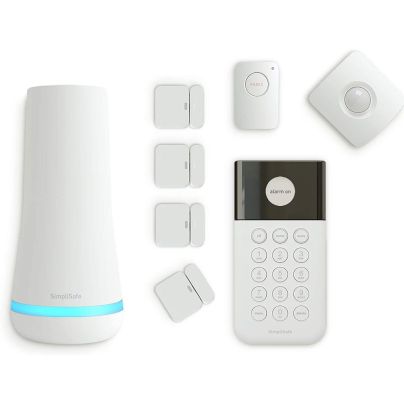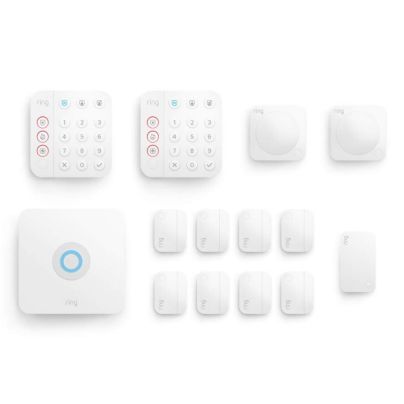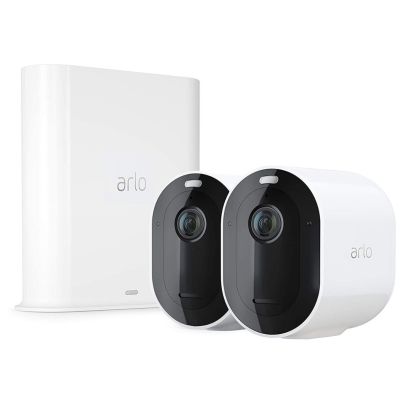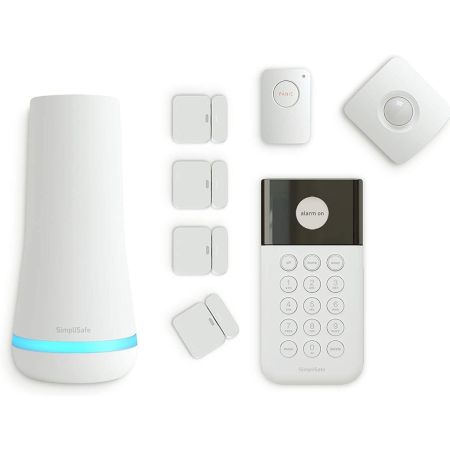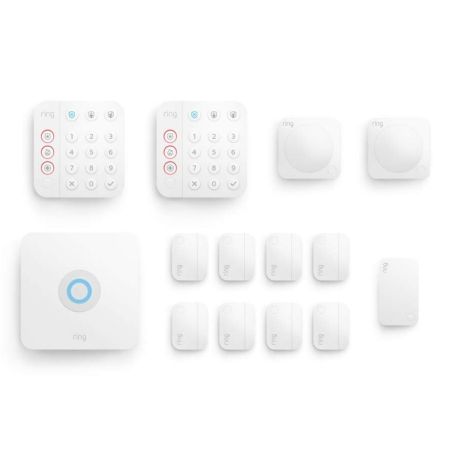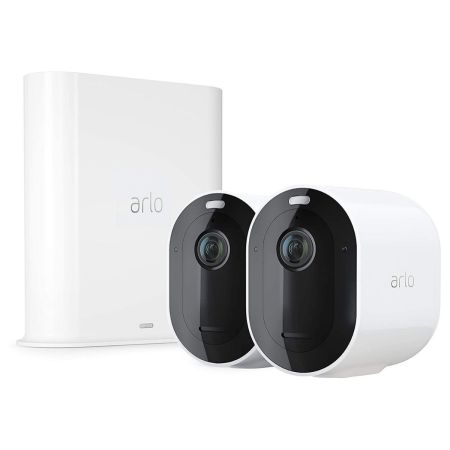We may earn revenue from the products available on this page and participate in affiliate programs. Learn More ›
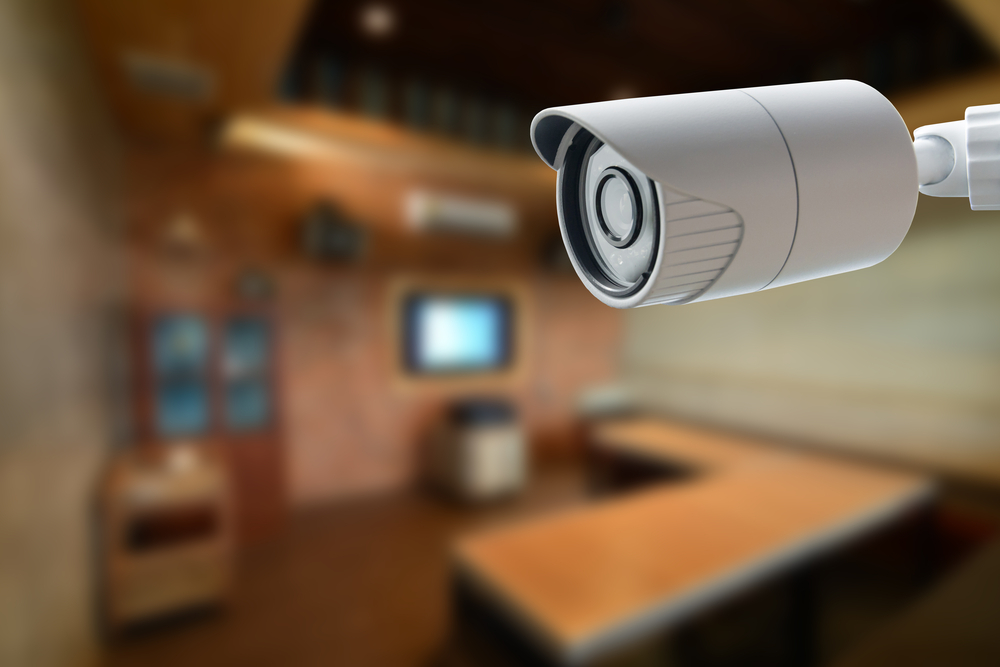
The safety of your home and its occupants should not be taken lightly. A security system is often the first line of defense against would-be home invaders aiming to steal valuables or intending harm. By alerting you and the police to the presence of intruders, a home security system reduces the risks and dangers posed by trespassers.
The inner workings of the best home security systems were once guarded by door-to-door salesmen and technicians, but this is no longer the case. Recent technological advancements have led to security systems homeowners can easily install themselves. The best DIY security system may even keep your home safer than those installed by alarm companies.
With a professionally installed setup, you’re involving at least one other person in your home security plan. Although most installers are trustworthy, the fewer people who know your system, the better. Security companies also have set protocols and installation techniques. An intruder familiar with these methods will have an easier time obstructing alarm sensors or avoiding them altogether. With a DIY security system, only you and your family know the code, the location of the sensors, and where any hidden cameras are placed.
DIY security systems come with instructions, mounting hardware, and tips to increase the system’s effectiveness—no technician necessary. Reputable systems are generally easy to install and come with high-quality sensors. Their batteries also tend to be of better quality than those in a knockoff system. Listed below, you’ll find the DIY home security systems that surpassed their competitors in each category:
- BEST OVERALL: SimpliSafe 8 Piece Wireless Home Security System
- RUNNER UP: Ring Alarm 14-Piece Kit
- UPGRADE PICK: Arlo Pro 3 Spotlight Camera Security System
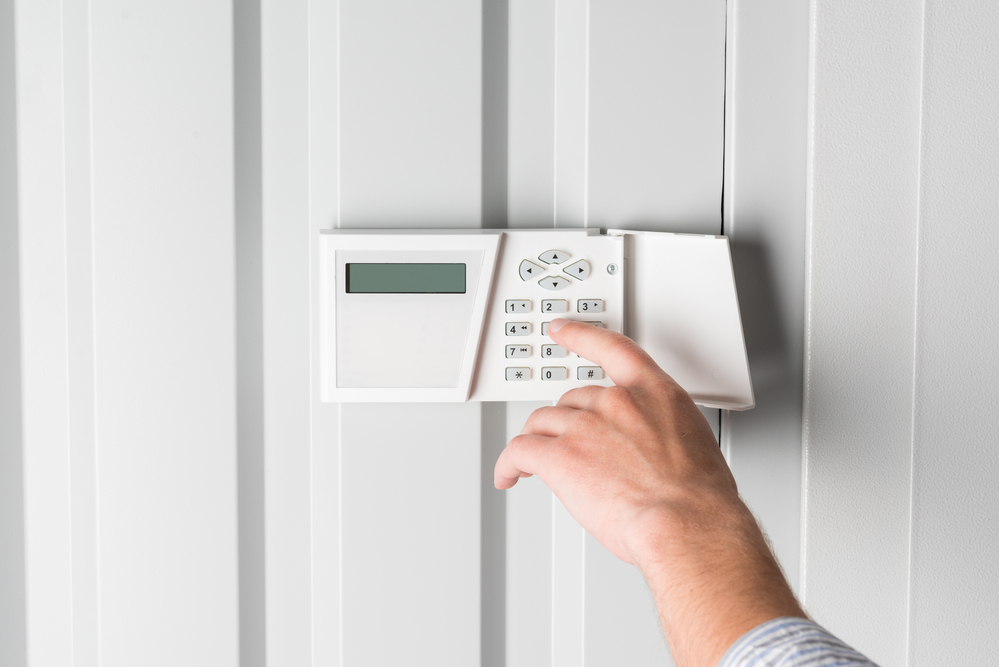
Key Shopping Considerations
Unless you’re already an alarm expert, some aspects of DIY security systems might be unfamiliar to you. This guide will go through some of the features and styles of DIY security systems to help make your shopping decision a little easier.
System Components
Home security systems, DIY or professionally installed, have several different types of sensors and components that help secure your home. Window and door two-piece sensors are the most common; activating the alarm when a door or window opens and the two pieces become separated. Motion sensors, alerting the system if someone walks through its field of view, are frequently included. Other safety sensors like carbon monoxide and smoke detectors, as well as temperature and flood sensors, are also available.
You can integrate cameras into most DIY security systems as well. They’re always on watch and can be essential for police investigations, should someone attempt to get into your house. Cameras work effectively when covering each exterior corner of the home, and adding interior units is a good idea as well.
How Many Sensors a Home Needs
The number of sensors required should be guided by the home’s design and layout. Most systems secure windows and doors with sensors on the first floor, leaving those on the second level unsecured. Truly effective home security requires installing sensors on every exterior window and door.
Depending on the layout of the home, you can place motion sensors in several locations for added security. It’s often best to purchase a starter kit and continue adding to your system as budget allows. Starter kits often include some of the sensors listed above, as well as loud sirens that can deter intruders.
Ease of Installation
A DIY system that’s difficult to install or program can be frustrating and time-consuming. Before you purchase, it’s worth looking into how the kit recommends installing its sensors, what programming them to the base station involves, and the process for adding future components. The best DIY security systems make these processes simple, removing as much guesswork as possible. They include battery-operated, wireless sensors that stick in place with adhesive tape. Most monitored systems also use their own cellular system to dial out in the event of an alarm, saving you the task of programming.
Monitoring: Professional vs. Self-Monitored Systems
There are two ways to oversee your alarm system: Pay a monitoring company or monitor it yourself. There are benefits to both. On one hand, a monitoring company will immediately alert the local authorities if your system is activated. The service costs money, however, and repeated false alarms can earn you a fine from the responding agencies.
On the other hand, self-monitored systems are entirely under your control, requiring you to make the appropriate calls for help if needed. You can avoid false-alarm fines and monthly fees, but you must have the ability to make the call, which may not be feasible in certain home invasion circumstances.
Fees
Monitored security systems require payments to the company providing the service, typically on a monthly basis. These subscriptions can be as low as a few dollars each month or as high as your cable bill. Some cities also require homeowners to pay for an alarm permit when installing a monitored security system. Contact your local building or police department to find out if your system requires a permit.
App Compatibility
For ultimate control of your home’s security, look for a security system with a decent app interface. These apps can alarm, arm, and disarm your system from your smartphone or tablet. Many provide access to your cameras and give real-time updates on things like temperature and the current condition of your sensors (such as when a window is open or closed).
Digital Assistant Compatibility
Purchasing a kit that works with a digital assistant adds an extra layer of convenience over solely app-based systems, allowing you to arm, disarm, and activate the system with your voice.
Our Top Picks
Best Overall
SimpliSafe 8 Piece Wireless Home Security System
See ItSimpliSafe’s system is an excellent choice if you’re looking for a reliable, all-around starter kit. This system comes with a keypad, four window or door sensors, a motion sensor, a panic button, and a base station with a built-in siren. The sensors install easily with adhesive strips, and programming them to the system simply requires typing in the sensor code. SimpliSafe is also compatible with several home automation assistants.
Runner Up
Ring Alarm 14-Piece Kit
See ItThis starter kit from Ring comes with eight sensors, a base station, two keypads, two motion sensors, and a WiFi range extender. It’s also incredibly easy to install: simply plug in the base station and connect it through the Ring security app. The sensors all mount with double-sided adhesive, and once activated, the base station and Ring security app do most of the work for you.
Upgrade Pick
Arlo Pro 3 Spotlight Camera Security System
See ItThis system comes with two high-definition cameras and a central hub. The hub can tie into an external hard drive, so storing recorded footage is no problem. The system setup is simple, as most of it is completed through the Arlo app. You can program the cameras to ignore certain areas within their field of view to avoid false activation, or to activate a spotlight when they detect motion. The battery life is decent (a few weeks for one charge), but having to remove your camera from a high perch to recharge can be a pain.
